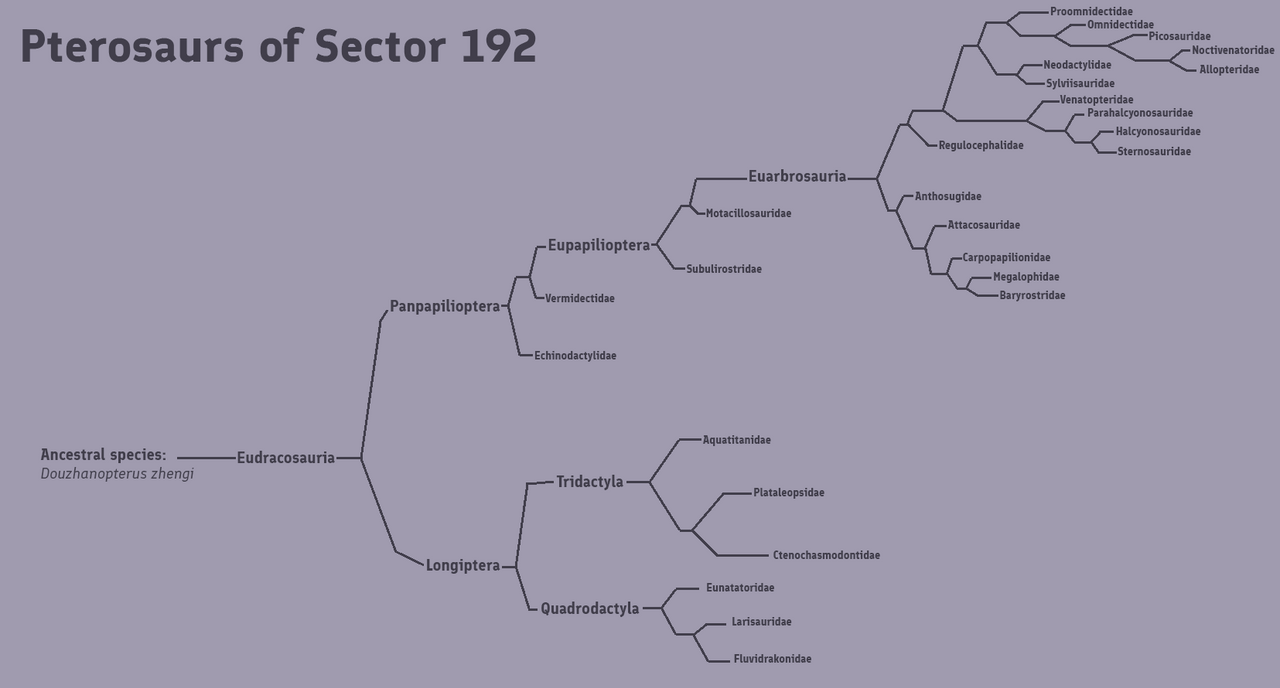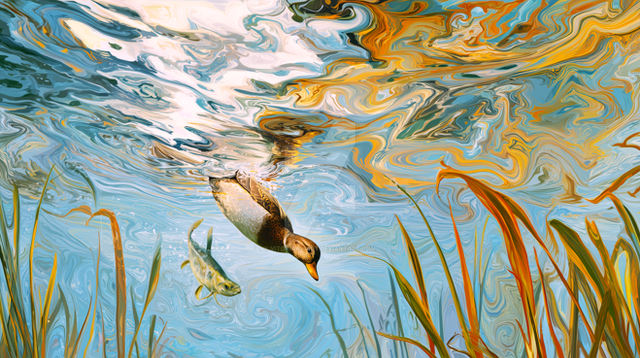HOME | DD
 Postorbital — Pterosaurs of Sector 192 - Tree
Postorbital — Pterosaurs of Sector 192 - Tree

#192 #animals #archosaur #biology #bird #evo #evolution #life #literature #net #nol #pterosaur #pterosaurs #sector #spec #speculative #story #text #worldbuilding #speculativeevolution #specevo #postorbital #seedworld #netoflife #postorbitalcoordinates #sector192 #eudracosauria
Published: 2022-04-21 19:55:10 +0000 UTC; Views: 2706; Favourites: 0; Downloads: 1
Redirect to original
Description
The pterosaurs of Sector 192 (all modern species of them belonging to clade Eudracosauria, "true dragon lizards") are highly diverse, and they are all derived from a single species - stem-pterodactyloid Douzhanopterus zhengi, which, together with all other lifeforms, arrived here about 70 million years ago. Since then, the pterosaurs radiated into a lot of unique new forms, from giant Aquatitan hovering above large lakes to tiny Sylviisaurus flickering in the dense shrubs. They are the most common flying vertebrates in Sector, though there are also some flying mammals.The whole large group Eudracosauria is split into two major branches - Longiptera ("long-winged", because of large, proportionally long wings in most of them), which mostly includes large, often semi-aquatic species, and Panpapilioptera ("all butterfly-winged", because of their usual small size and colourfulness), which includes mostly terrestrial, arboreal or sometimes semi-aquatic small species. Two groups split about 68 MYA, soon after Douzhanopterus' appearance in Sector 192. The ancestral longipteran was probably a semi-aquatic active piscivore, while ancestral panpapiliopteran was probably a terrestrial or semi-arboreal small omnivore.
An important detail when it comes to two eudracosaur lineages is their different reproductive strategies.
Longiptera had, similarly to their ancestor Douzhanopterus, stayed most usually superprecocial with none or nearly none parental care, with juveniles hatching ready to fly and live on their own and typically filling an ecological niche different from adults', growing slowly and having high mortality rates - similar to sea turtles, for example. Noticeable exceptions are larisaurids, fluvidrakonids and (some of) plataleopsids, which evolved some parental care - though still, only some, with more duck- or chicken-like precociality or, at most (in larisaurids and fluvidrakonids) seagull-like semiprecociality.
Panpapilioptera, instead, evolved towards highly altricial reproduction, with helpless young and high amounts of parental involvement, comparable to passerine birds or many mammals. Most basal panpapiliopterans, echinodactylids, are seagull-like semiprecocial; more derived vermidectids are eagle-like semialtricial; even more derived subulirostrids are owl-like altricial; and, finally, most derived motacillosaurids and euarbrosaurs are passerine-like superaltricial. Babies are born tiny, naked, blind and helpless, totally relying on their parents for food and protection, and are growing rapidly, with low mortality rates. Such reproductive strategy made them very diverse, as there is no ontogenic niche partition, unlike longipterans.
Because of fast growth rate and altriciality, panpapiliopterans became very successful and widespread, filling niches similar to birds such as woodcocks, finches, eagles, woodpeckers, tits, kingfishers and swifts - and much more! Longipterans stayed less diverse, with niches similar to albatrosses, ducks, flamingoes and seagulls usually filled by them.
In general, pterosaurs of Sector 192 are very diverse.


















